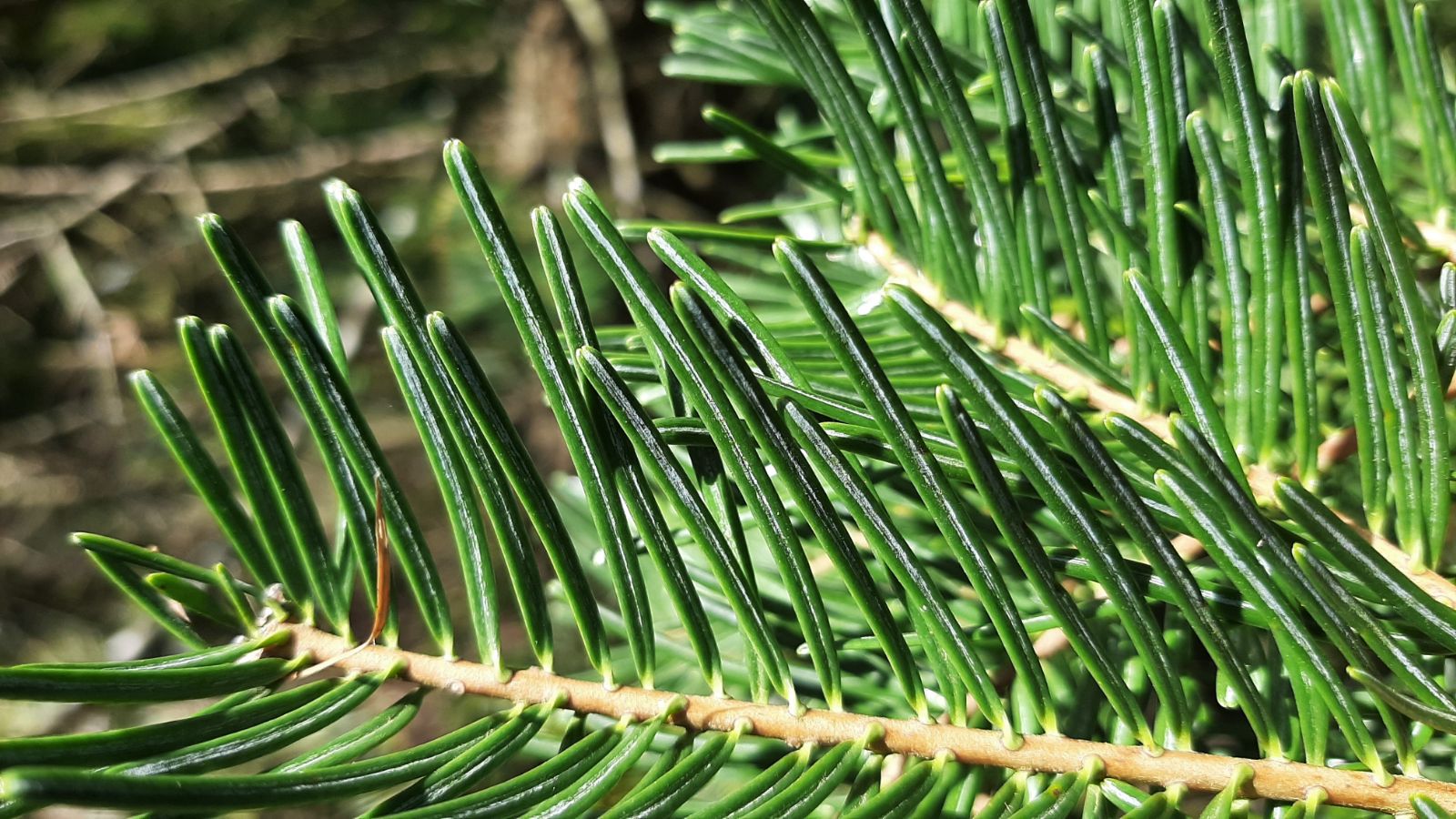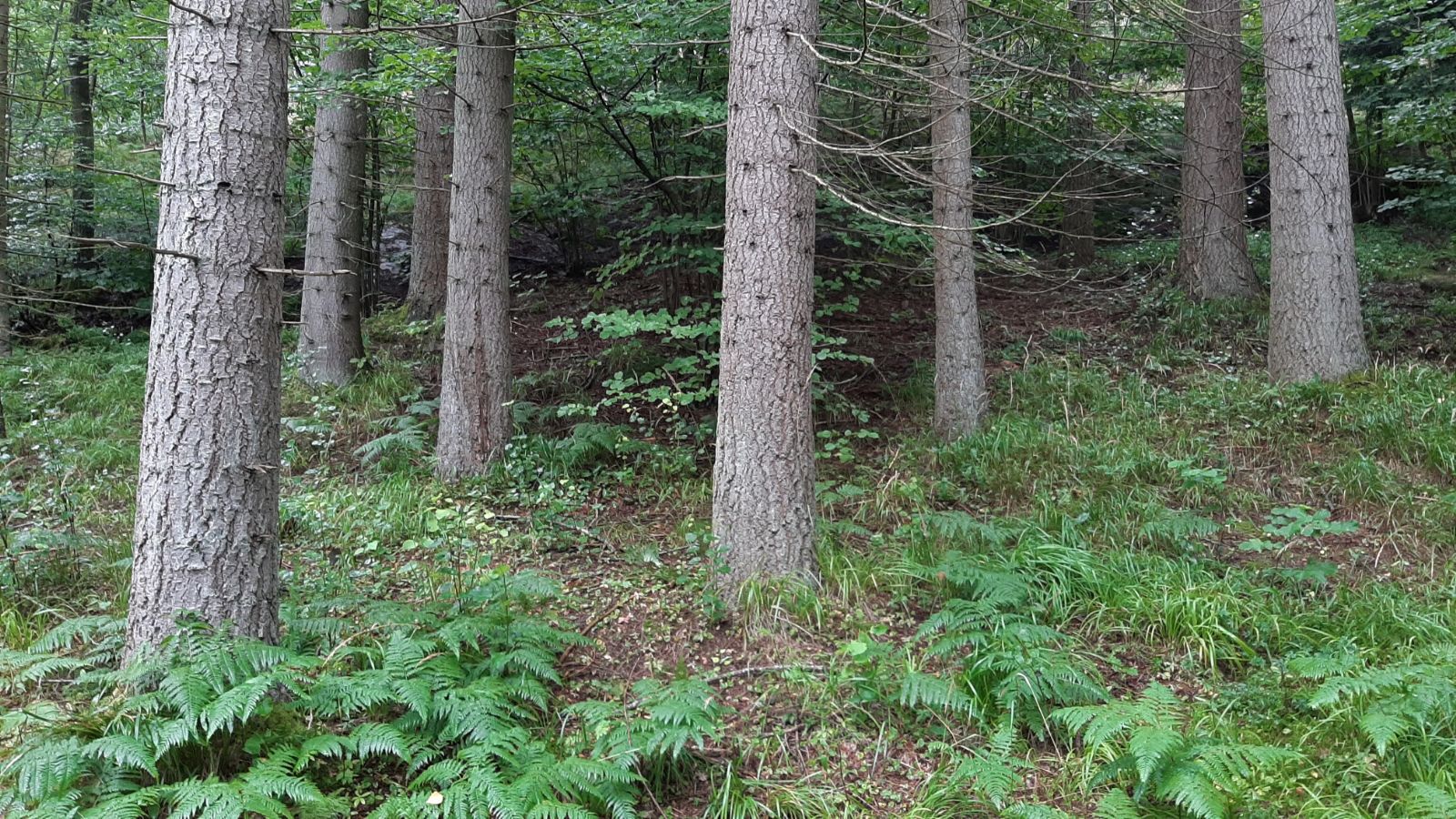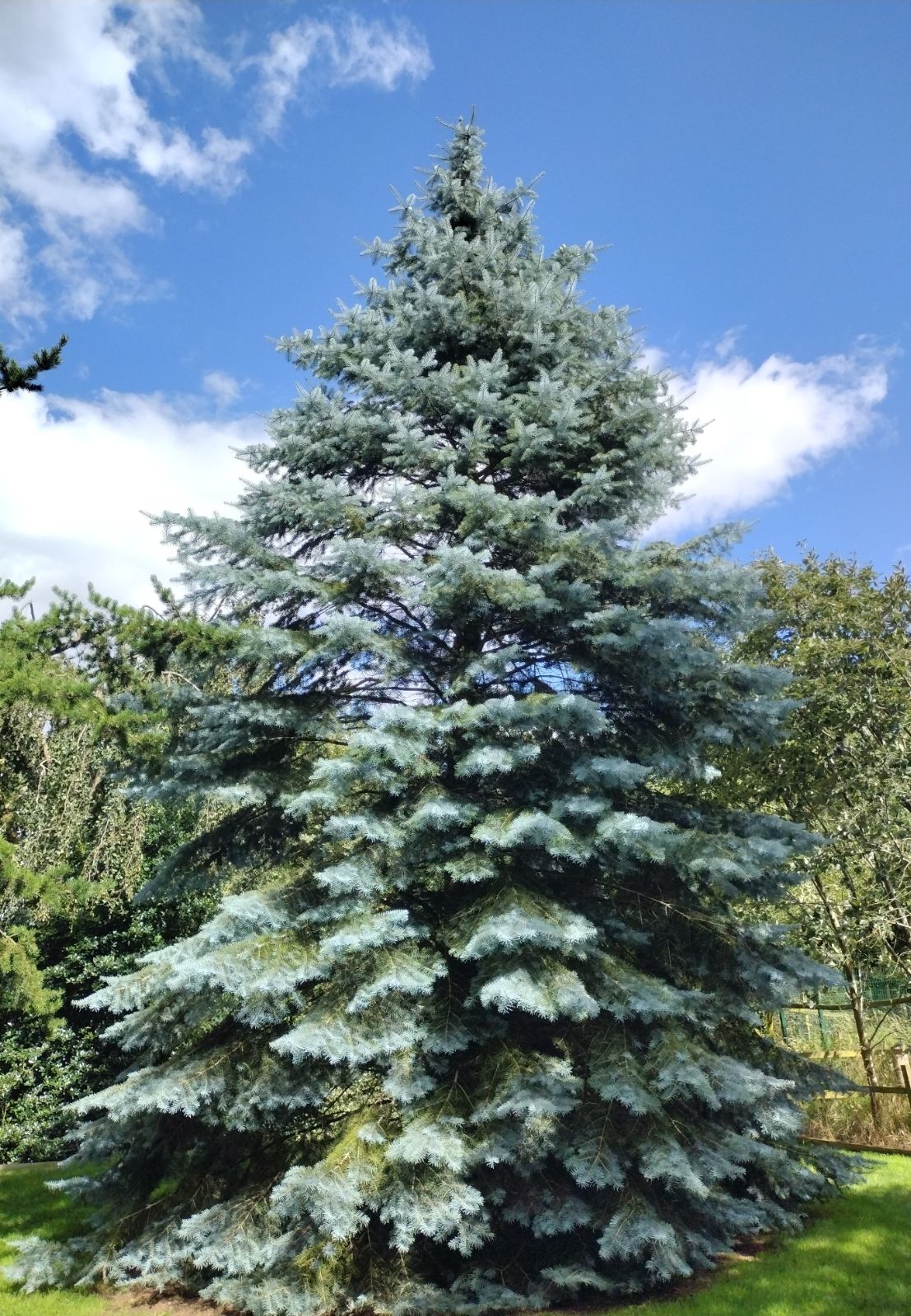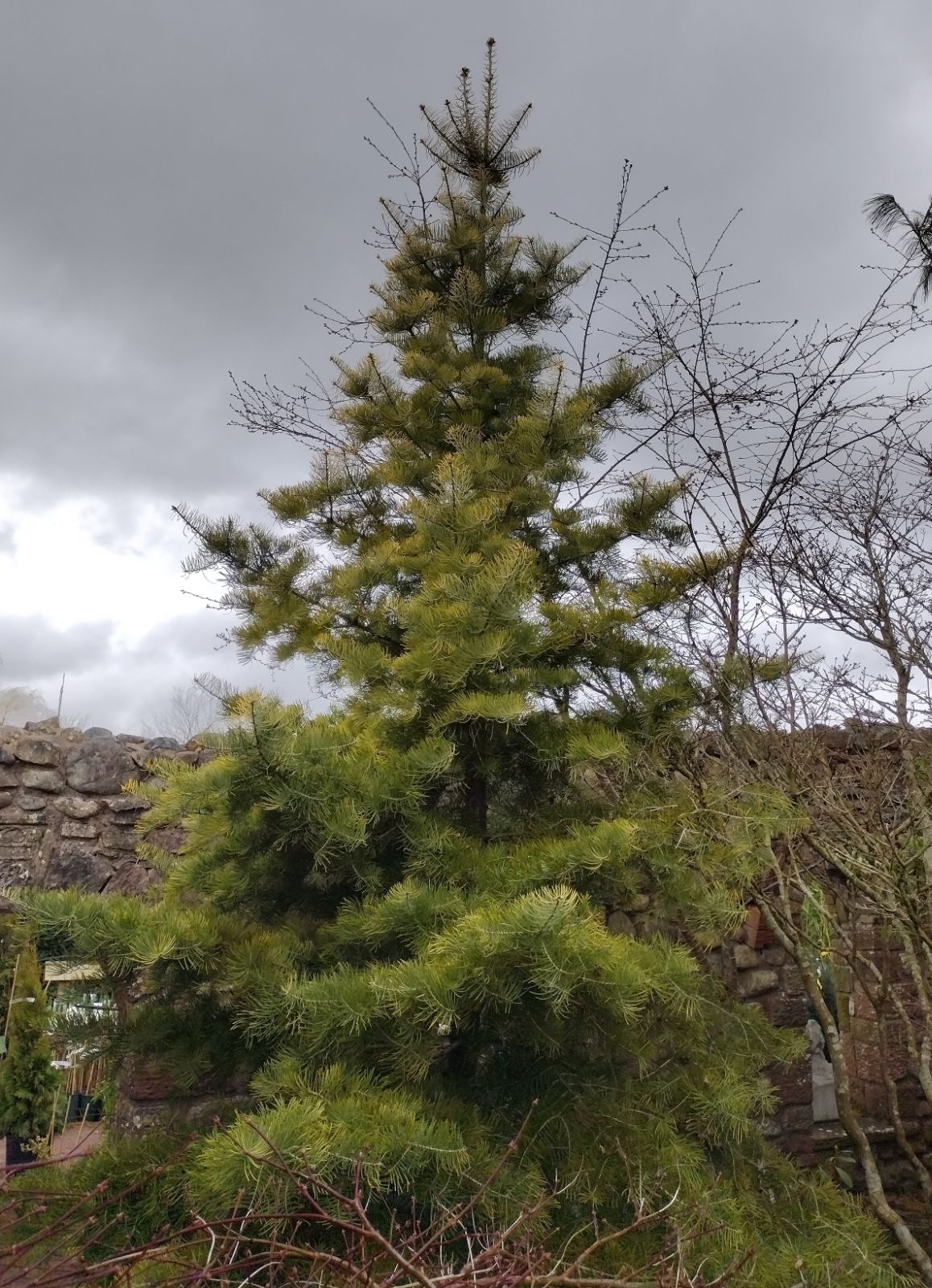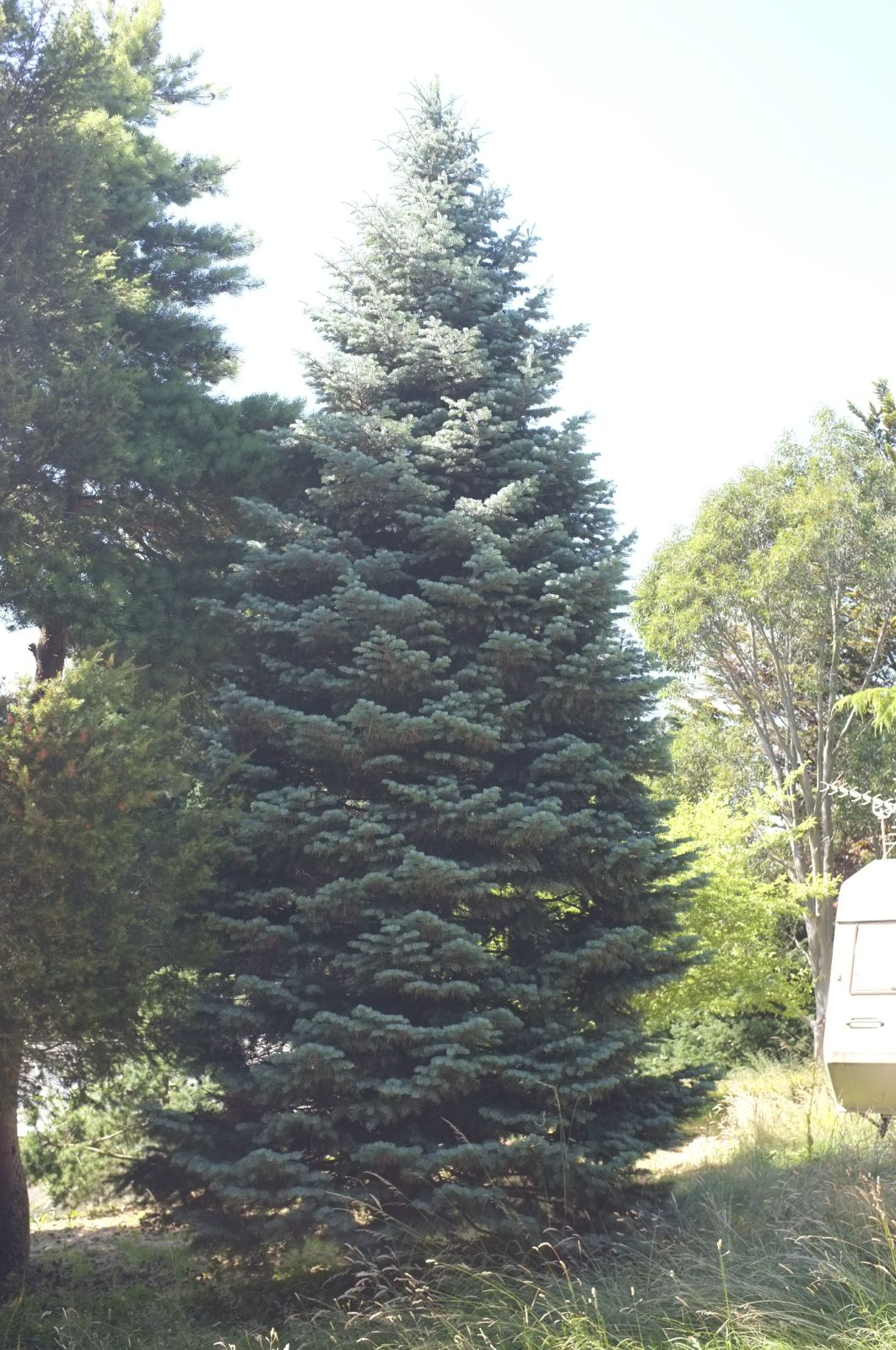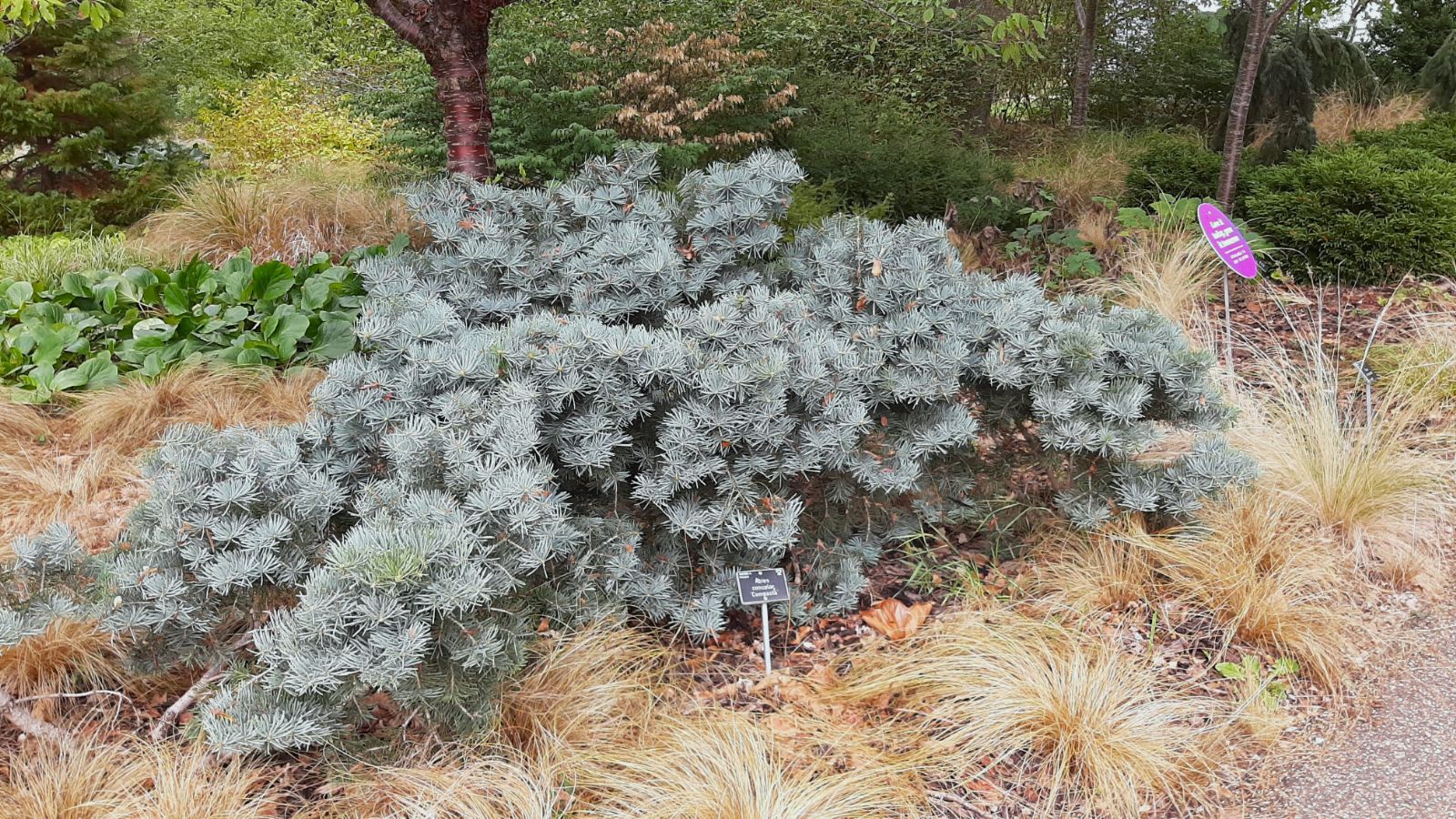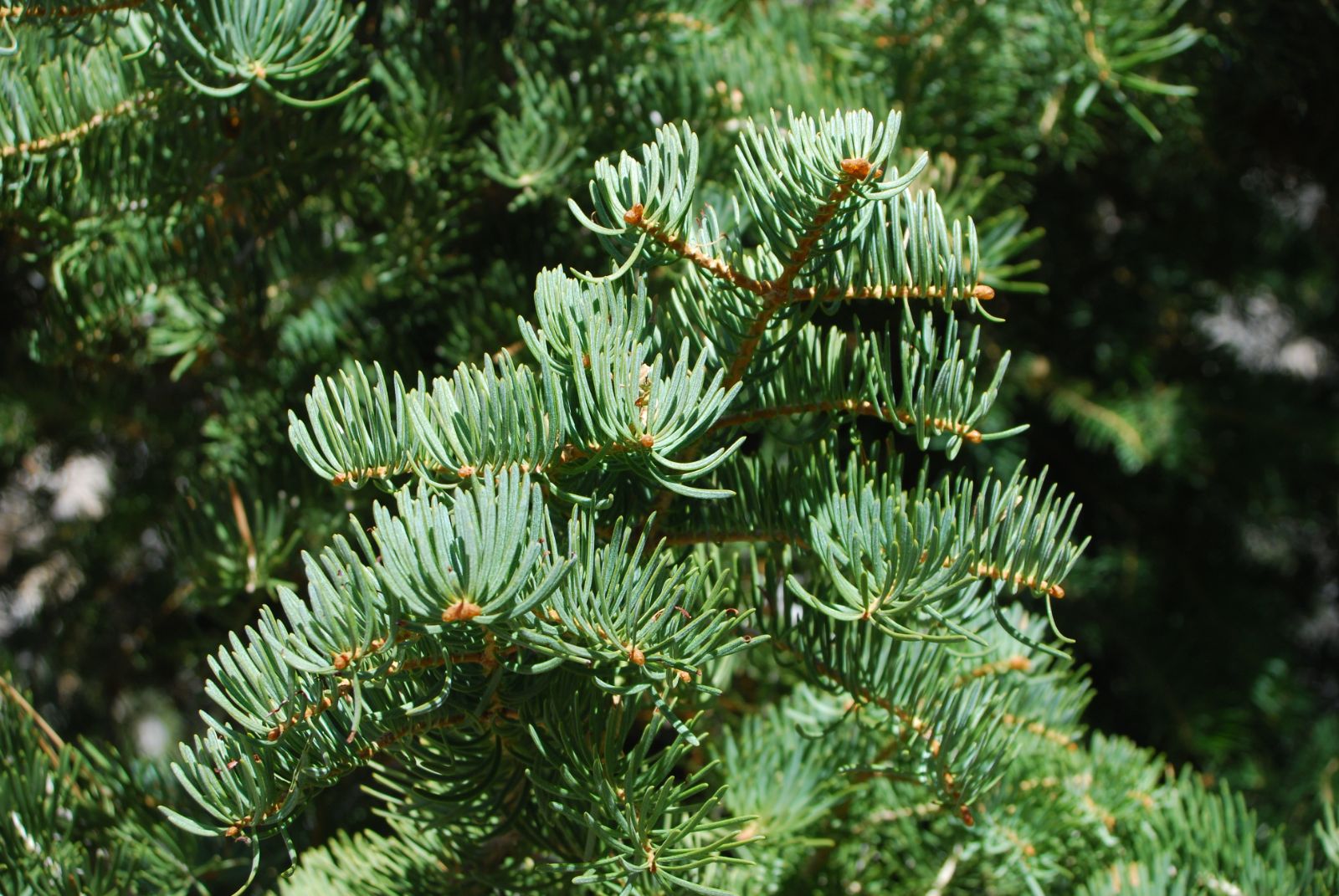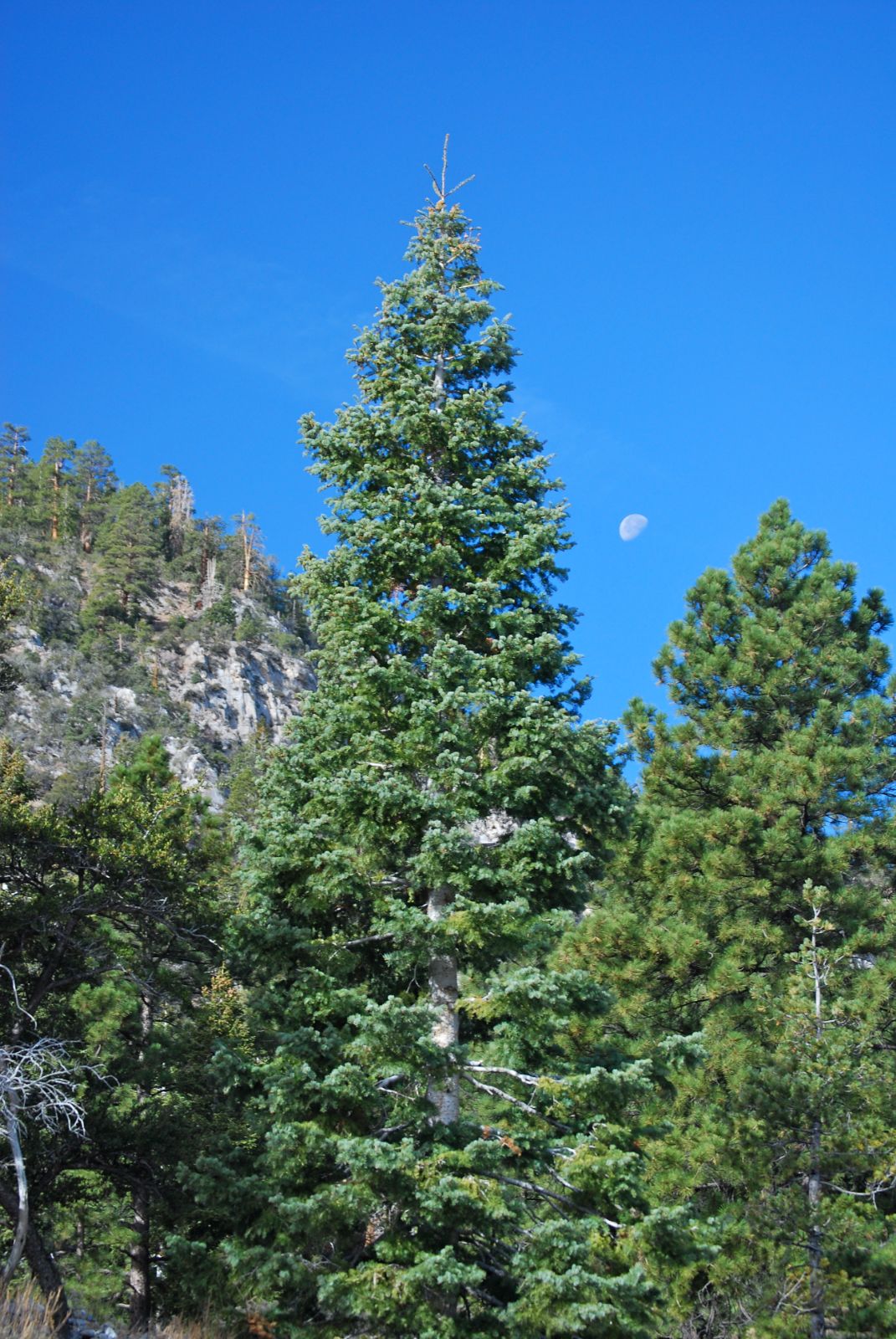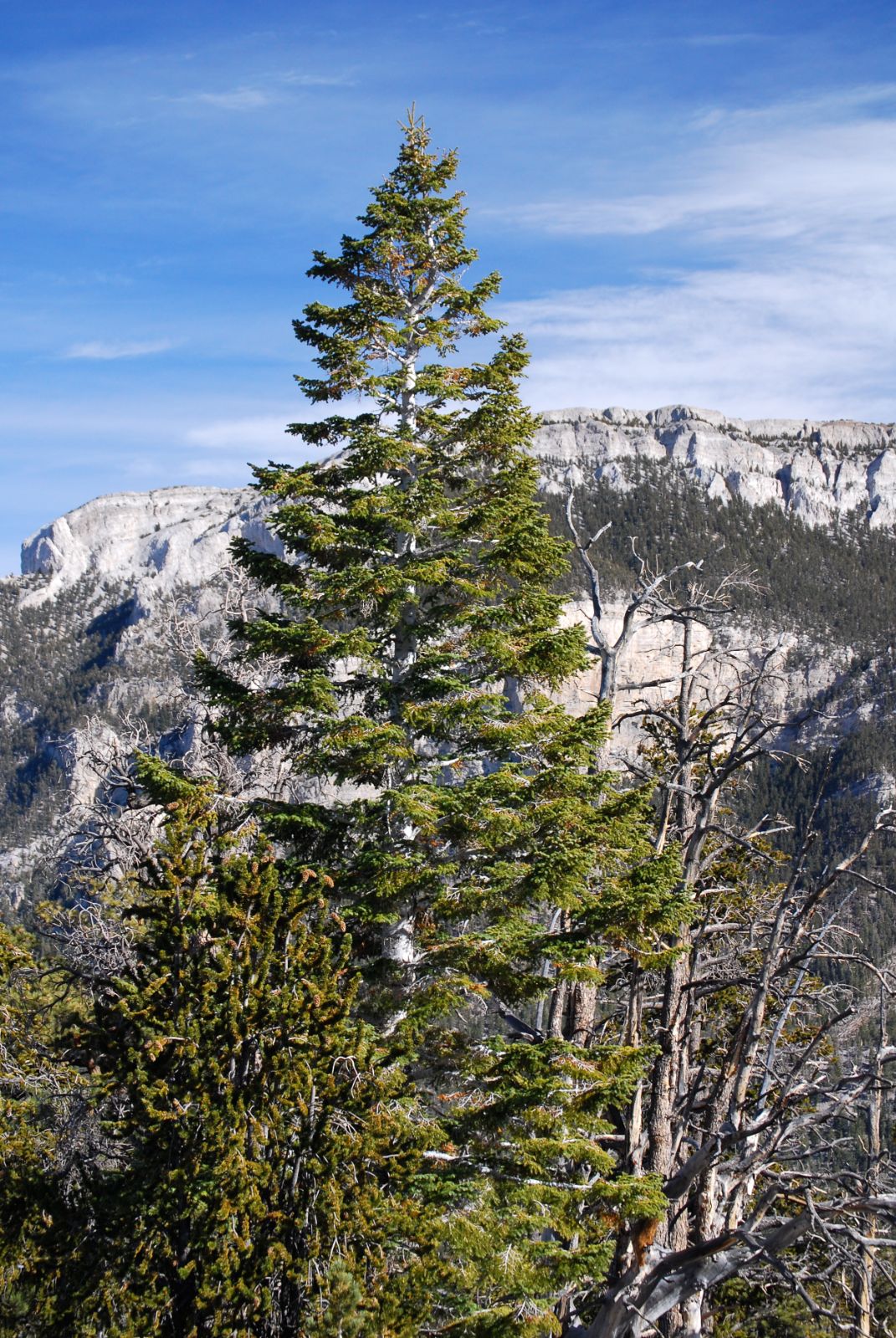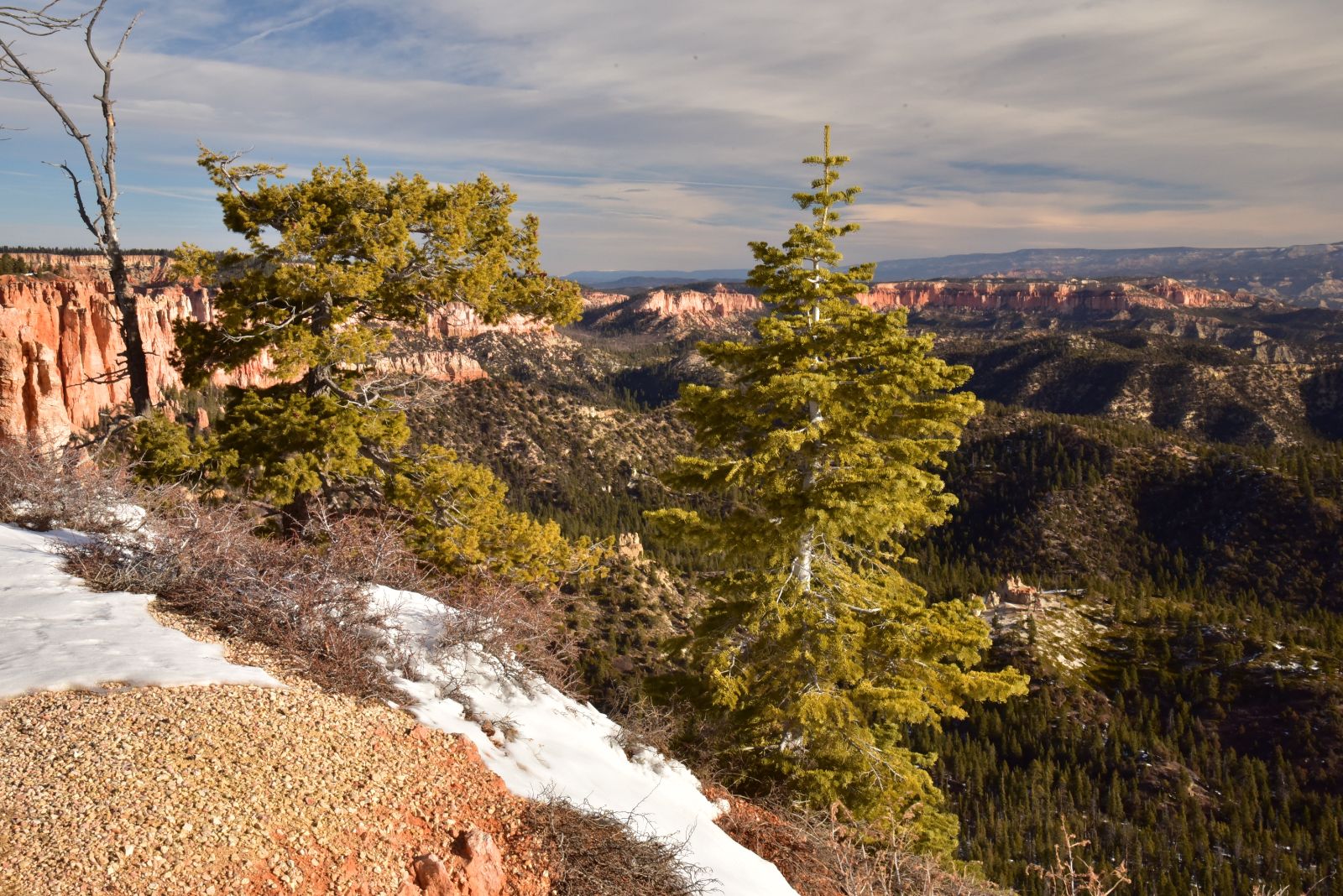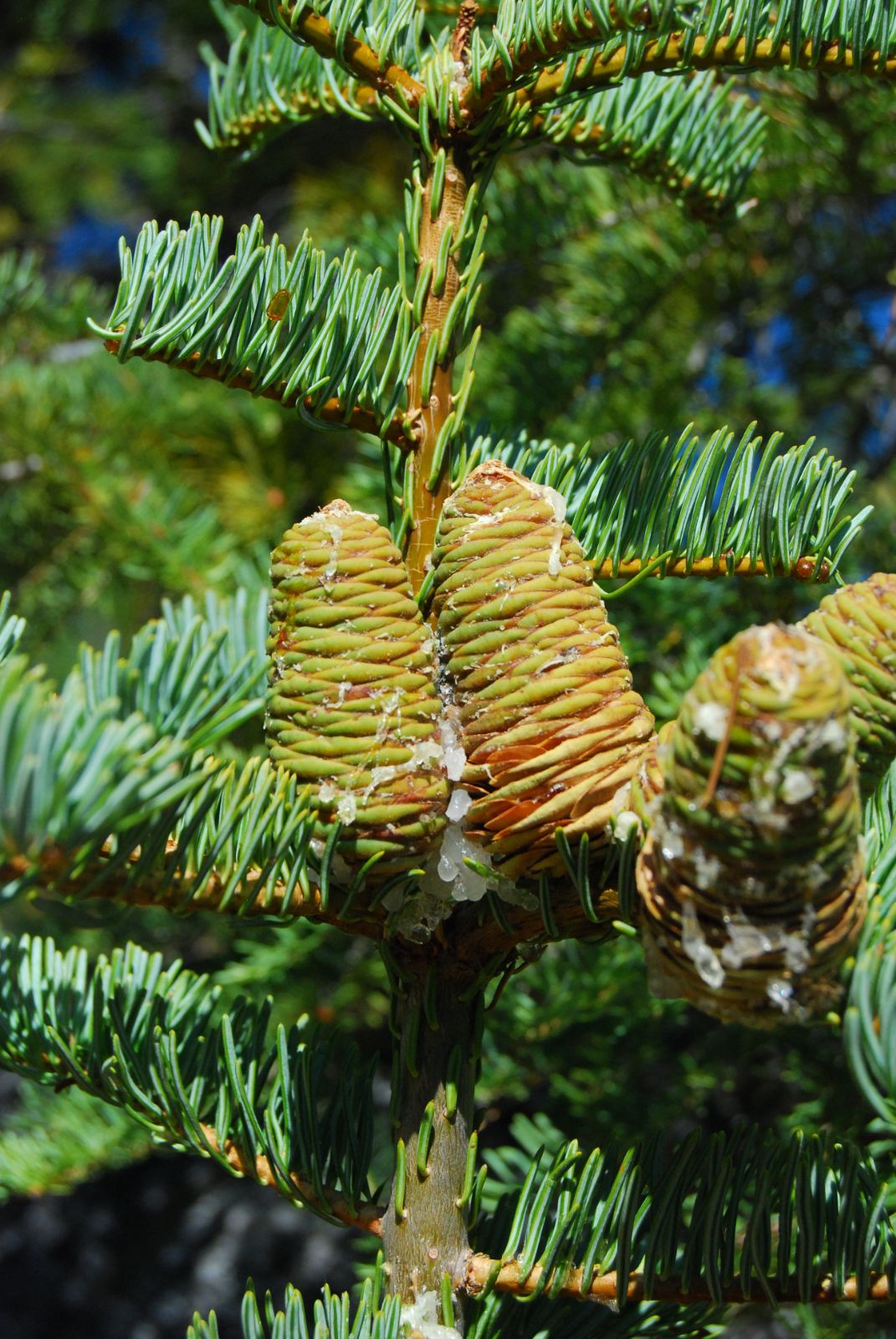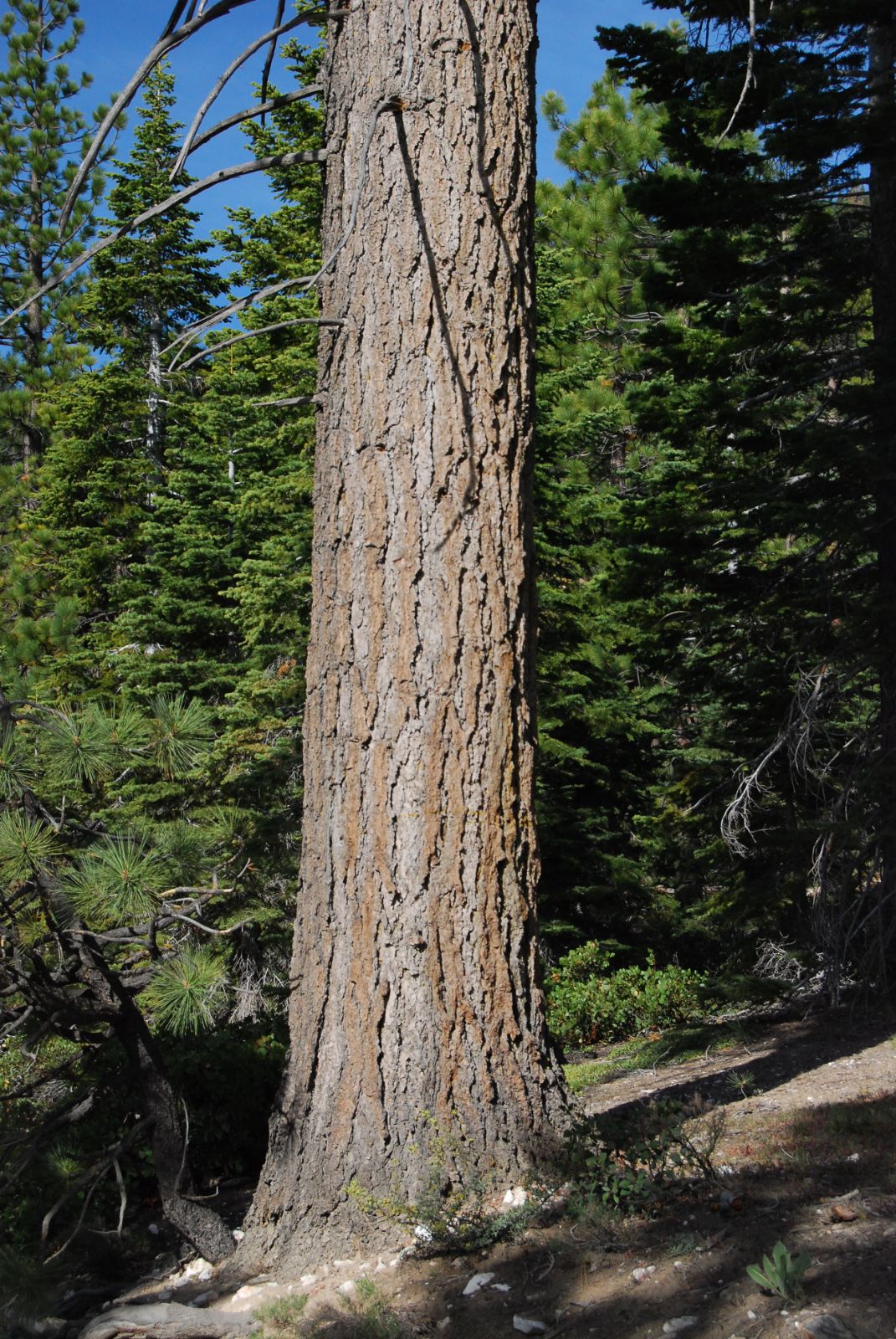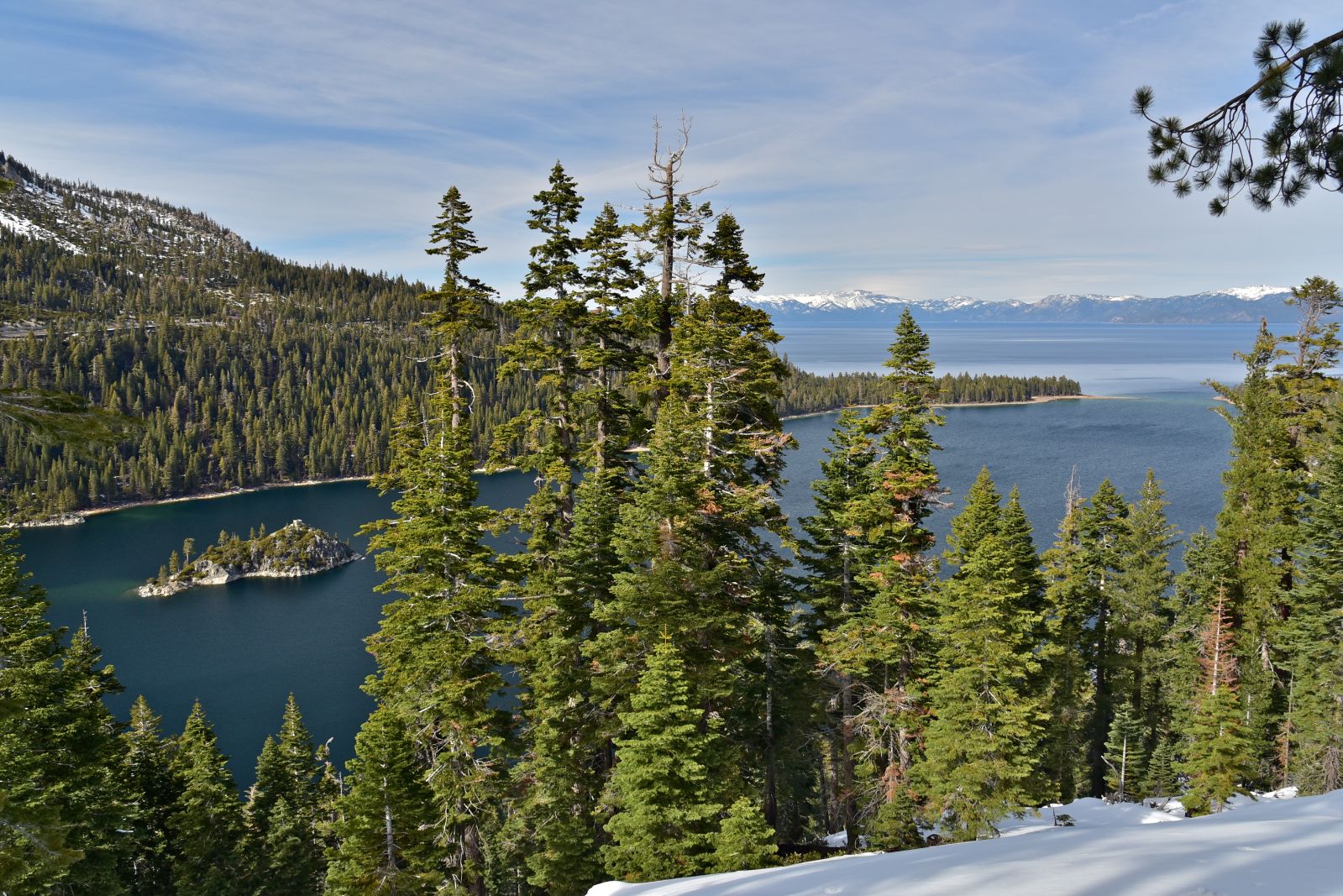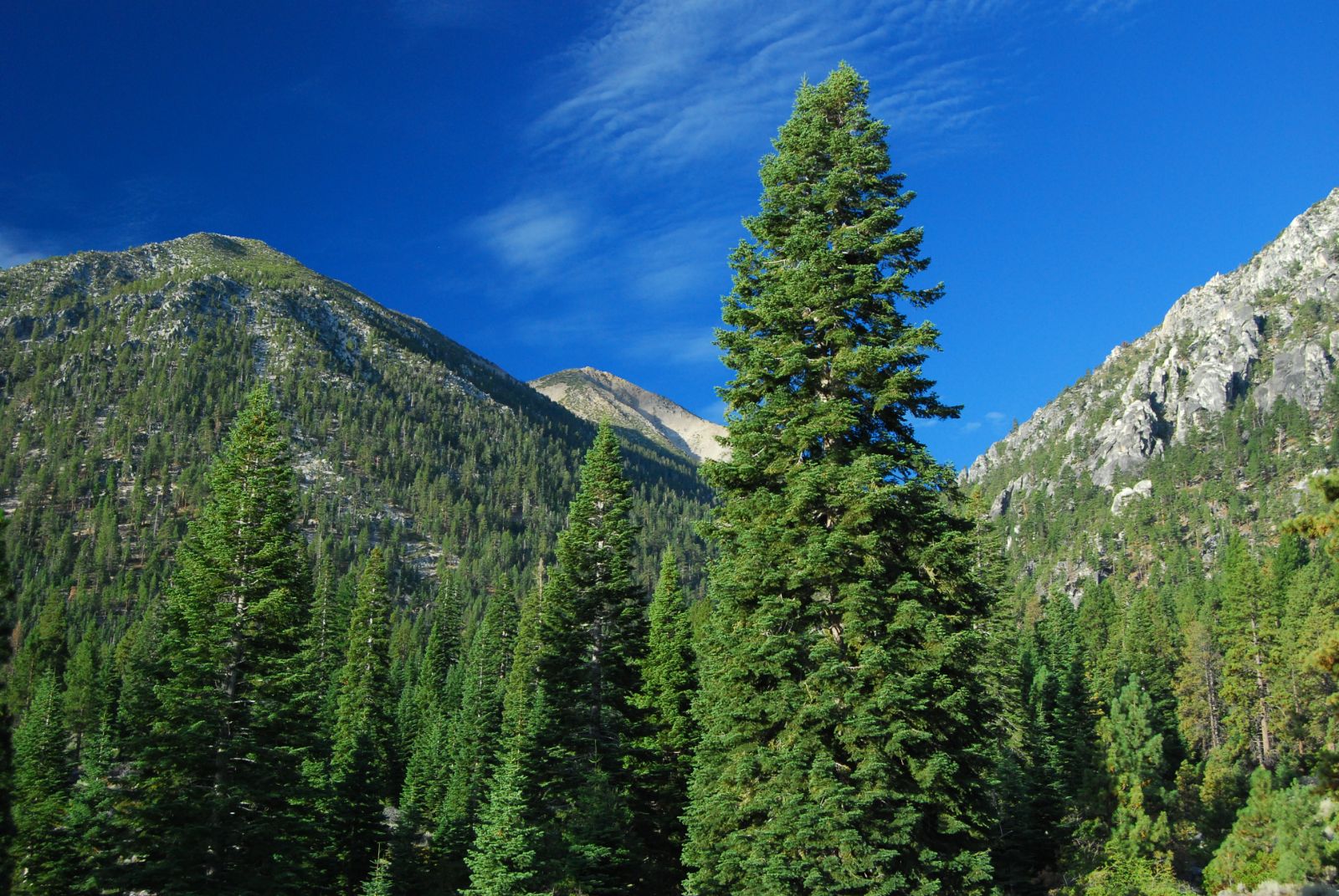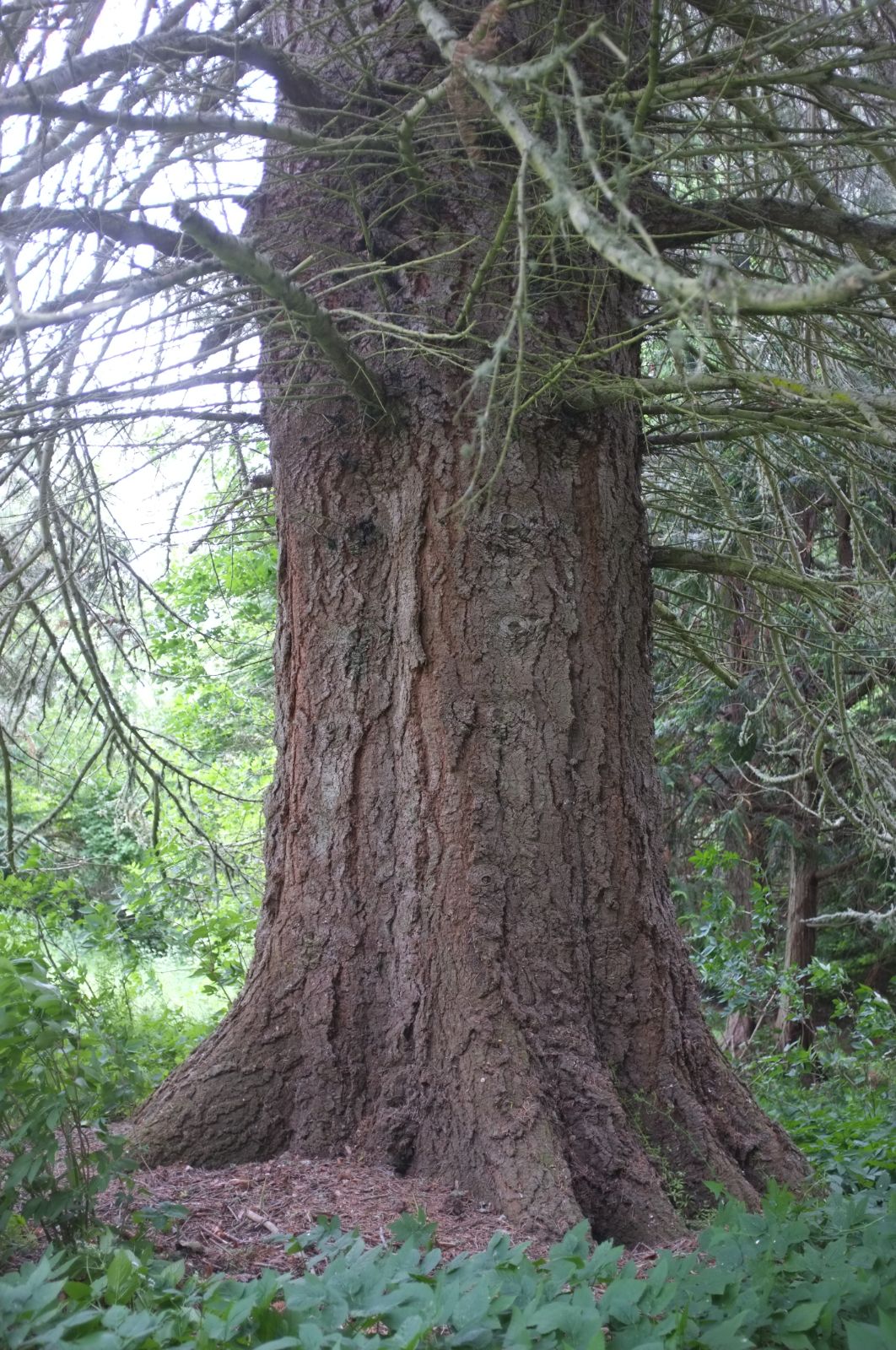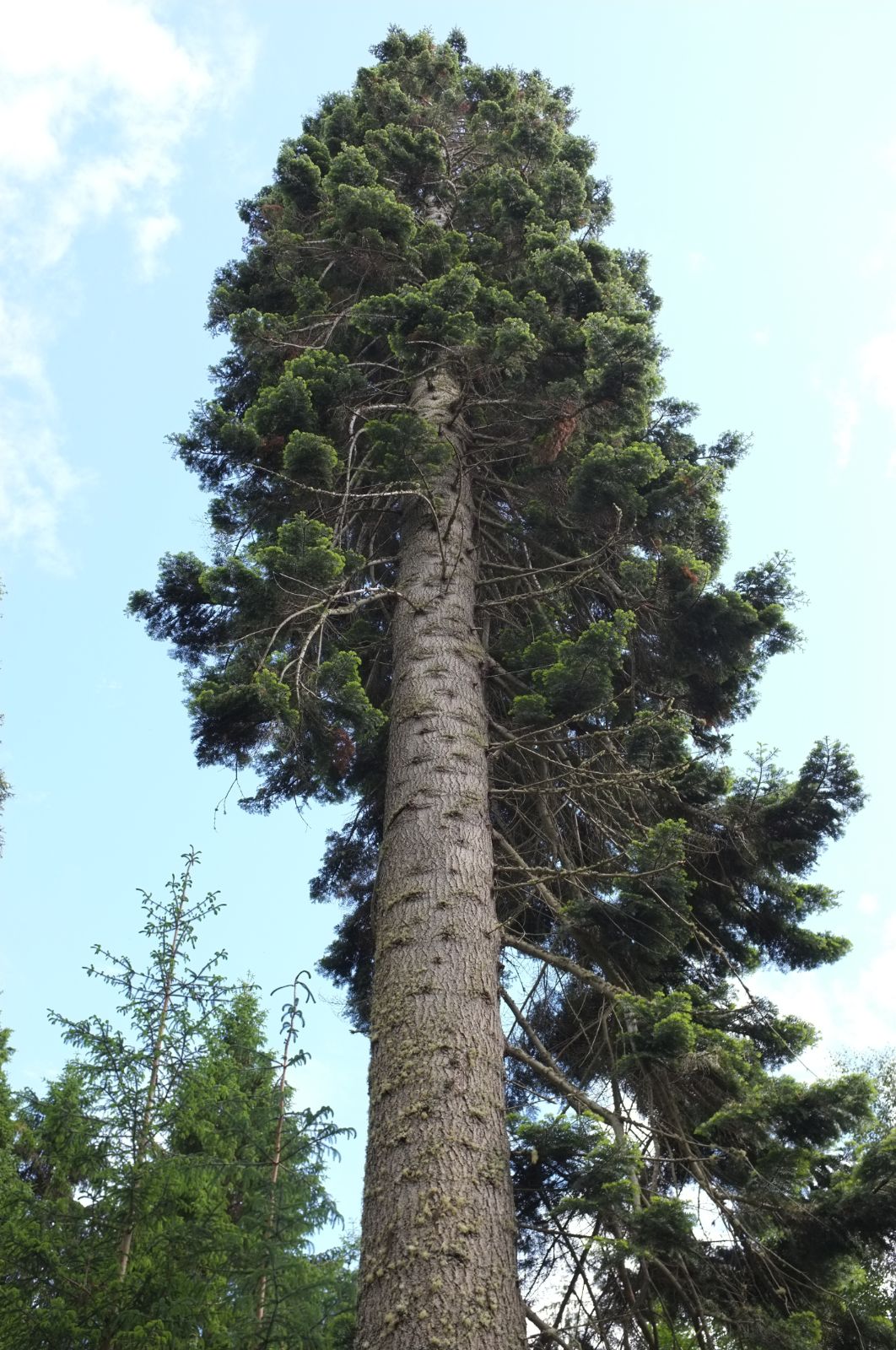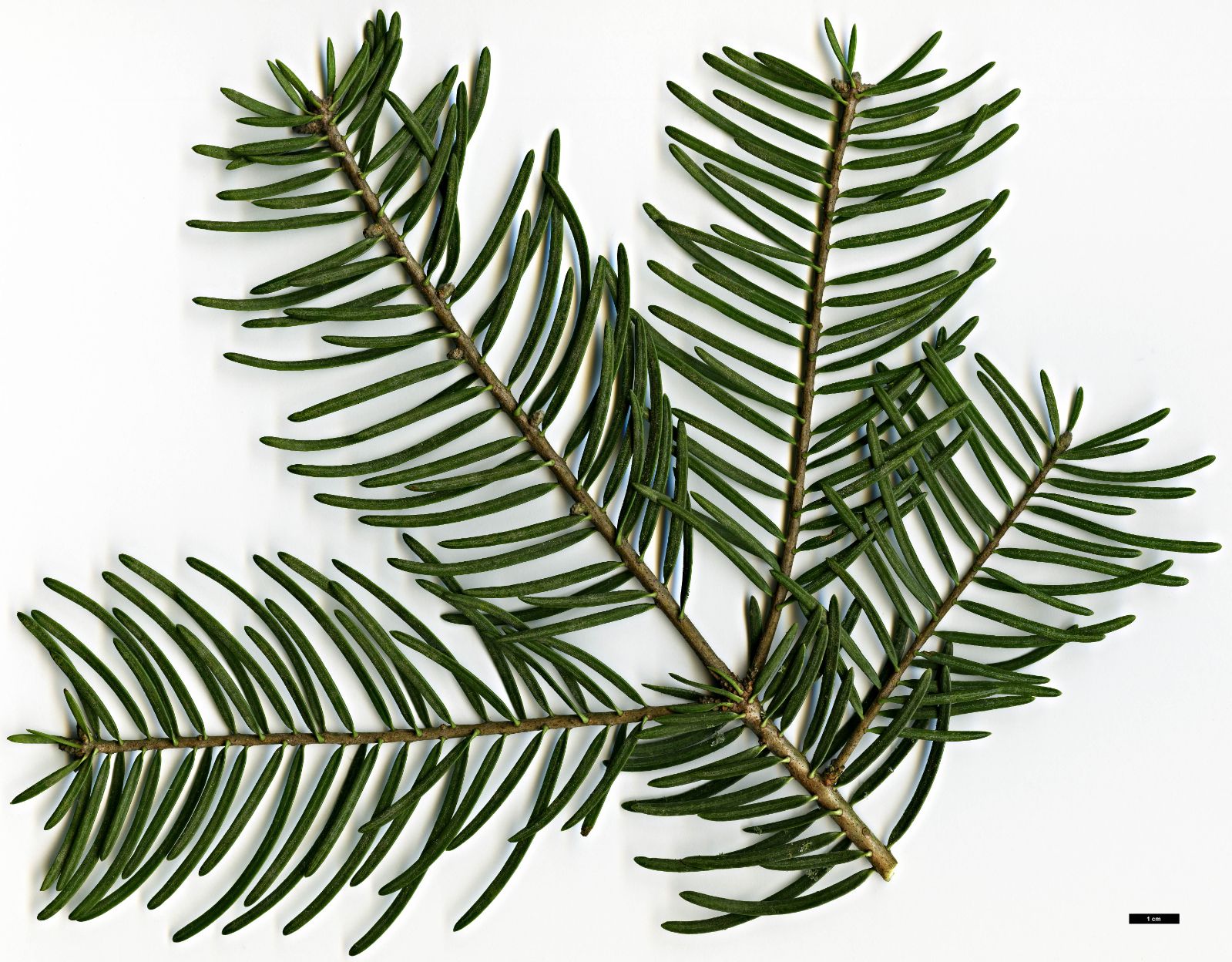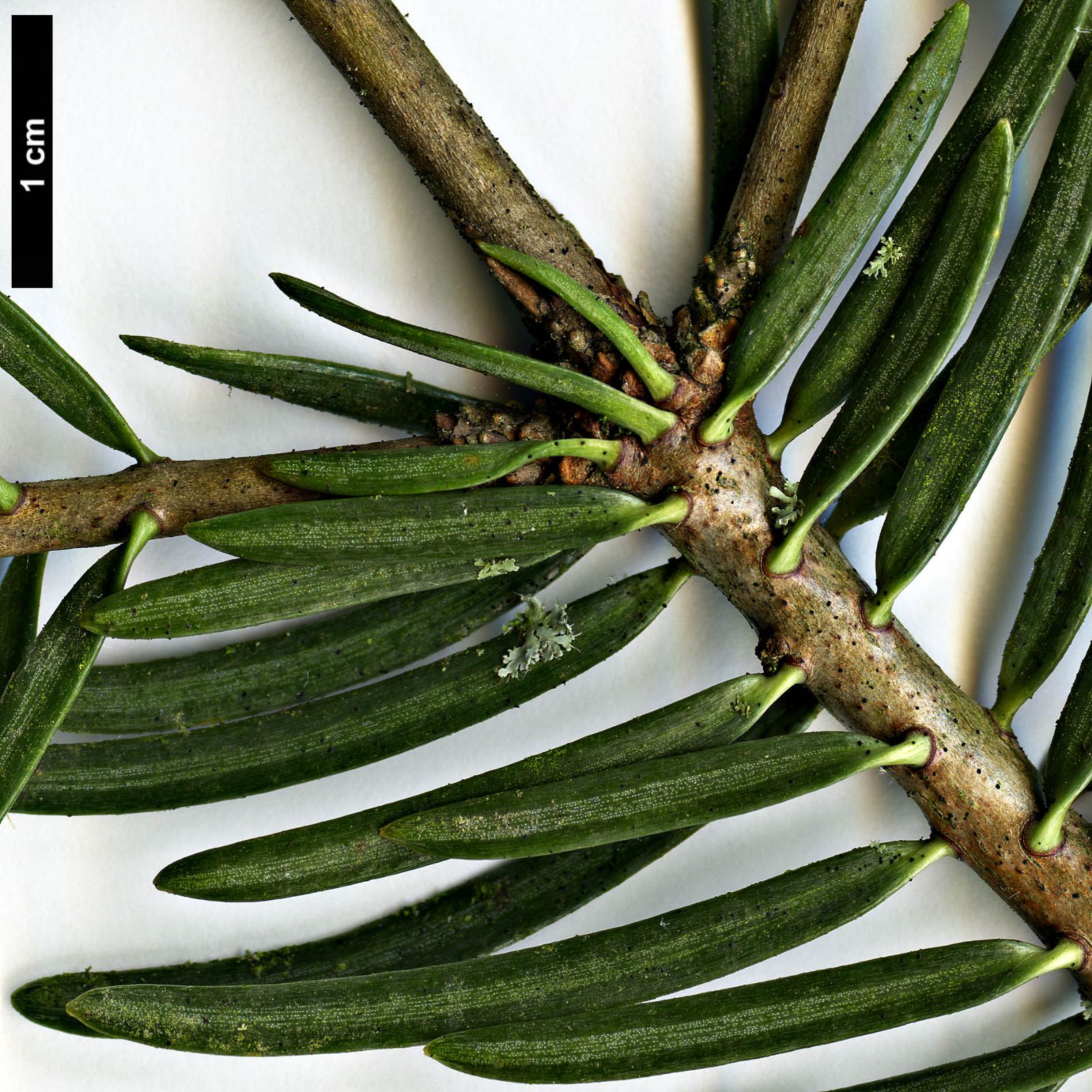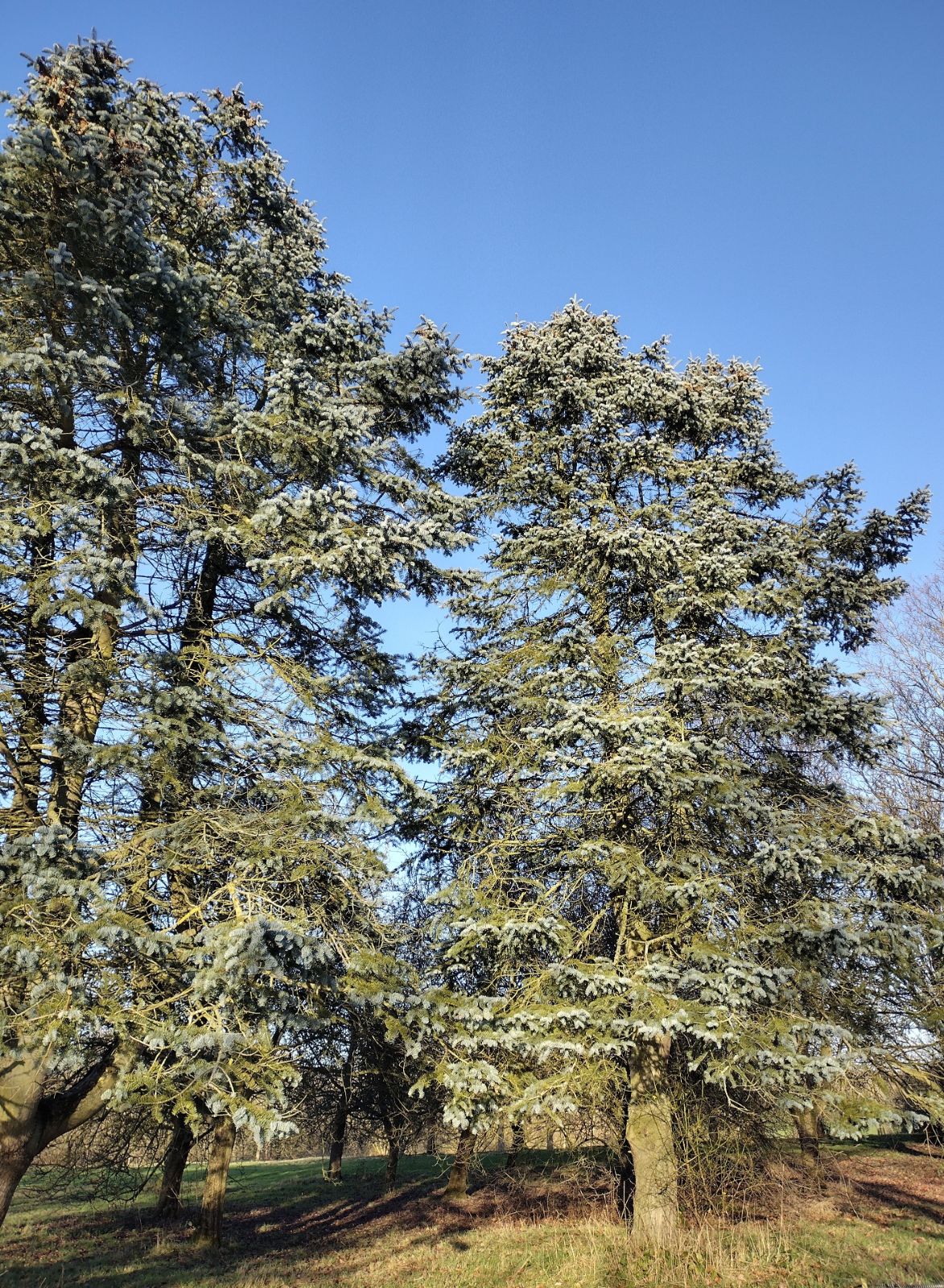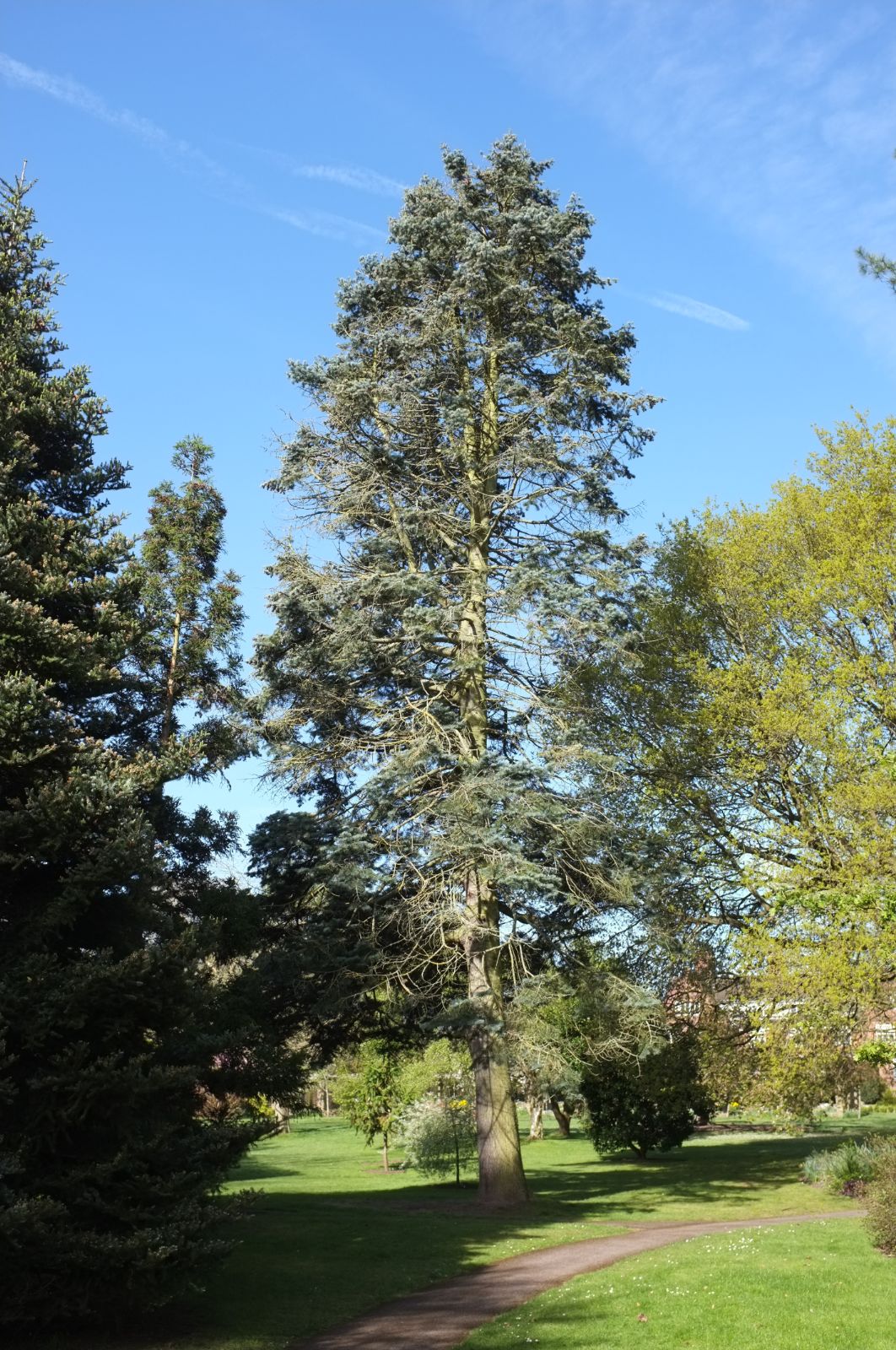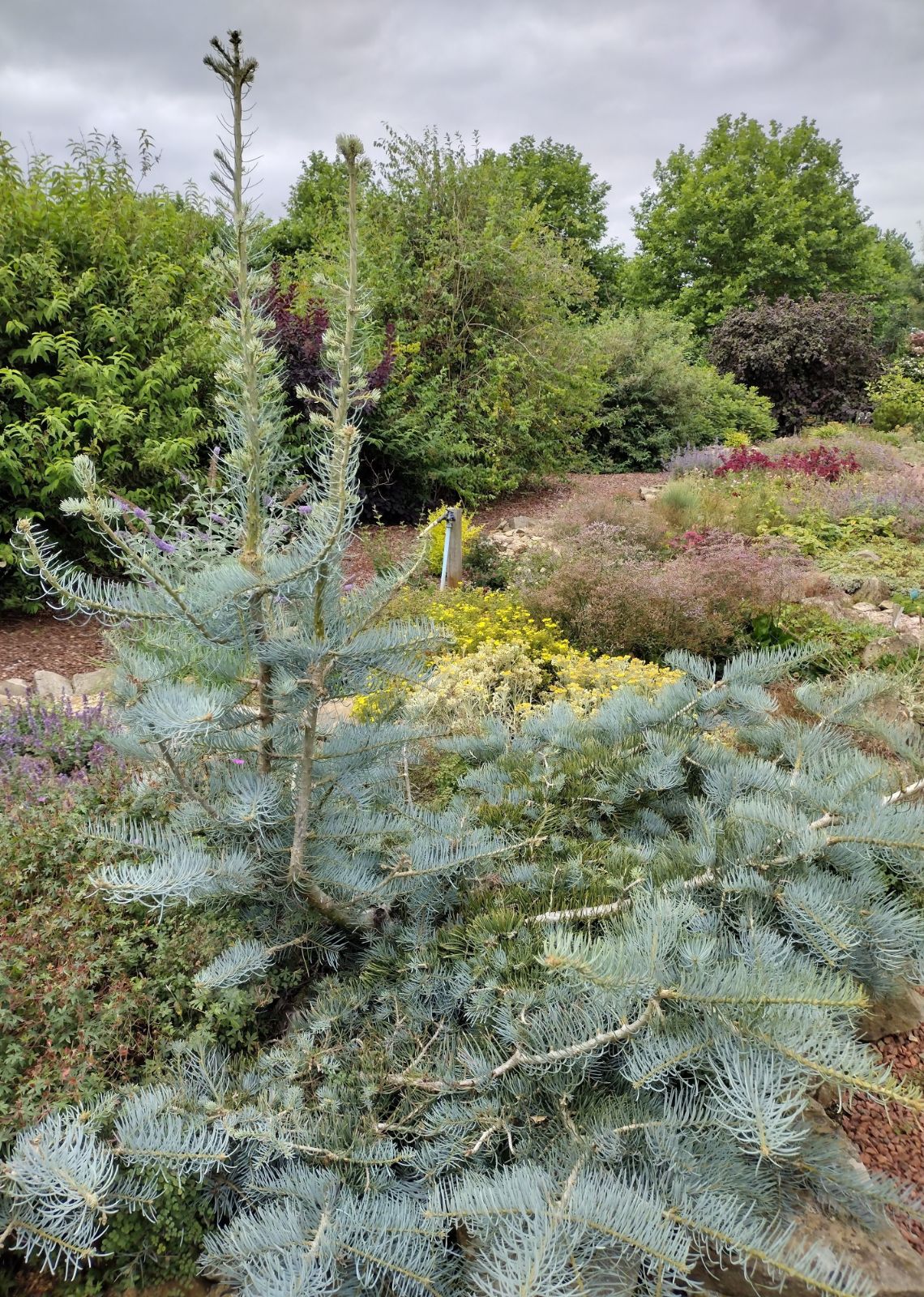Abies concolor
Sponsor
Kindly sponsored by
Sir Henry Angest
Credits
Tom Christian (2021)
Recommended citation
Christian, T. (2021), 'Abies concolor' from the website Trees and Shrubs Online (treesandshrubsonline.
Genus
Common Names
- Colorado Fir
- White Fir
- Rocky Mountain Fir
- Sapin du Colorado
- Sapin Concolore
- Kolorado-tanne
- Pino Real Blanco
Infraspecifics
Other taxa in genus
- Abies alba
- Abies amabilis
- Abies × arnoldiana
- Abies balsamea
- Abies beshanzuensis
- Abies borisii-regis
- Abies bracteata
- Abies cephalonica
- Abies × chengii
- Abies chensiensis
- Abies cilicica
- Abies colimensis
- Abies delavayi
- Abies densa
- Abies durangensis
- Abies ernestii
- Abies fabri
- Abies fanjingshanensis
- Abies fansipanensis
- Abies fargesii
- Abies ferreana
- Abies firma
- Abies flinckii
- Abies fordei
- Abies forrestii
- Abies forrestii agg. × homolepis
- Abies fraseri
- Abies gamblei
- Abies georgei
- Abies gracilis
- Abies grandis
- Abies guatemalensis
- Abies hickelii
- Abies holophylla
- Abies homolepis
- Abies in Mexico and Mesoamerica
- Abies in the Sino-Himalaya
- Abies × insignis
- Abies kawakamii
- Abies koreana
- Abies koreana Hybrids
- Abies lasiocarpa
- Abies magnifica
- Abies mariesii
- Abies nebrodensis
- Abies nephrolepis
- Abies nordmanniana
- Abies nukiangensis
- Abies numidica
- Abies pindrow
- Abies pinsapo
- Abies procera
- Abies recurvata
- Abies religiosa
- Abies sachalinensis
- Abies salouenensis
- Abies sibirica
- Abies spectabilis
- Abies squamata
- Abies × umbellata
- Abies veitchii
- Abies vejarii
- Abies × vilmorinii
- Abies yuanbaoshanensis
- Abies ziyuanensis
The first part of this article introduces the diversity inherent within Abies concolor, its affinities with A. grandis, and the intermediate form(s) often inferred in some permutation of the name ‘lowiana’ (treated here as var. lowiana). See individual articles under var. concolor and var. lowiana for descriptions, distribution, ecology, and horticultural commentaries. Cultivars are given below the species, rather than below either of the varieties; most of them probably belong to the type.
There are several North American firs that can be regarded as ‘taxonomic pairs’, that is to say the differences between them are slight, and thorough sampling from across their ranges has revealed them to be clines. Examples include A. concolor and A. grandis, and A. magnifica and A. procera. Our understanding of these names continues to be hindered by the fact that they were originally described and introduced based on extremes, thus the middle portions of the clines, where one species gradually blends into another, are relatively poorly studied and poorly understood. These same vexations reveal themselves in a far more alarming way further south, in Mexico and Mesoamerica; the firs of this region are introduced in the article ‘Abies in Mexico and Mesoamerica’.
In the northern hemisphere, and particularly in North America, these clines are the physical expression of several north-south-and-back-again migrations that have been caused by the cycle of glacial and inter-glacial periods. These cycles have inevitably resulted in periods where populations have existed in relative isolation, and others where they have mixed before being separated once again, and the extant morphological diversity along and within these clines reflects this. It also reflects the different environmental conditions populations have had to adapt to across north-south ranges that can extend thousands of kilometers in length (Xiang et al. 2018; Debreczy & Rácz 2011).
In our current interglacial we can see that the two ends of such clines are now functioning as relatively stable species, but still we struggle with the characterisation of their intermediate forms and seem determined to shoe-horn these troublesome intermediates into our artificial taxonomic concepts. This is why the use, status, and ranks of names that have been coined to cover intermediate forms are the subject of so much argument, for example A. concolor var. lowiana, which is generally considered intermediate between A. concolor and A. grandis, and A. magnifica var. shastensis which in turn was traditionally considered intermediate between A. magnifica and A. procera. Farjon (2017), for example, dismisses both of these infraspecific names and reduces them to synonymy with their respective ranking species, saying that the entities they are supposed to represent do not merit taxonomic distinction, while Debreczy & Rácz (2011) and Hunt (1993) lurch to the other extreme of recognising A. lowiana at species rank!
In strictly taxonomic terms perhaps Farjon is right, but these names remain widely used, in one form or another, because the distinction is useful even if it is technically dubious. For example, A. concolor var. lowiana generally performs better in cultivation in north west Europe because it has a more northern and western (i.e. cooler and wetter) distribution than var. concolor, which is the better of the two in a more continental regime.
In a work aimed primarily at those interested in the cultivation of trees, it would be counter-intuitive to dismiss names that remain widely used, and which help to help facilitate and structure discussion, enabling horticulturists to make distinctions based on their local conditions.
'Argentea'
A vigorous clone with striking silvery-white leaves (cf. the blue of ‘Violacea’) but otherwise typical habit, capable of growing 4–5 m in ten years. Known as a named selection since 1903, but also known to occur sporadically in batches of seedlings (Auders & Spicer 2012). Larry Hatch suggests some, but not all plants labelled ‘Candicans’ belong here (Hatch 2021–2022).
'Aurea'
A dull yellow selection made before 1906 by the Ansorge Nursery, Germany (Auders & Spicer 2012). Auders and Spicer say that it is untidy when young but eventually develops into ‘a rather striking tall tree.’
‘Wintergold’ is a smaller, brighter yellow cultivar (Auders & Spicer 2012).
'Candicans'
With very pale whitish-blue leaves, tree-like in habit, but of slow growth. Selected at the Arboretum National des Barres, France, in 1929. As with many named selections plants of the same or remarkably similar characters will occasionally appear in batches of seedlings (Auders & Spicer 2012). Hatch considers it indistinct from ‘Argentea’ (Hatch 2021–2022) and in reality these highly silver (cf. blue) selections could, for convenience, be lumped into an Argentea Group or similar.
'Clarence'
A selection with exceptionally long leaves, ultimately only a small tree, but not so small to fit the loose ‘dwarf cultivars’ category used here. To 4 × 1.5 m in ten years (Debreczy & Rácz 2011).
Dwarf Cultivars
A vast selection of dwarf or semi dwarf selections of A. concolor exists, including several named witches’ brooms. Those listed here all remain <3 m in ten years; those described as ‘extreme dwarf’ usually remain <50 × 50 cm in ten years according to Auders & Spicer (2012).
- ‘Archer’s Dwarf’ Conical habit, to 1 m in ten years. Selected in the UK and introduced in 1982, this selection is possibly prone to reversion: The Tree Register records one plant so-labelled in Gloucestershire having achieved 7 m by 2018
- Ashbury’ Extreme dwarf of rounded habit
- ‘Bella’ (‘Biella’) A slow-growing compact clone with blue needles raised in Hungary
- ‘Blue Cloak’ A semi-pendulous selection with blue leaves, Hatch suggests it copes better than most selections with high humidity
- ‘Blue Sapphire’ An extreme dwarf, selected from a witches’ broom on a plant of ‘Violacea’ in Czechia
- ‘Blue Spreader’ As the name suggests, a form with good blue needles growing wider than tall
- ‘Breburda’ An extreme dwarf
- ‘Bryce Canyon’ An extreme dwarf
- ‘Bugy Wugy’ An extreme dwarf with grey-green leaves
- ‘Candicans Nana’ A compact selection of ‘Candicans’, to 1 m in ten years
- ‘Cernosice’ An extreme dwarf
- ‘Cesta’ An extreme dwarf
- ‘Charming Chub’ A very small, compact pyramid to 60 cm in ten years
- ‘Chlum’ ’An extreme dwarf
- ‘Cimaron’ An extreme dwarf
- ‘Compacta’ An old cultivar with good blue needles and compact habit, to 1 × 1 m in ten years
- ‘Conica’ An unusual selection with fastigiate branching, forming a narrowly conical dwarf tree
- ‘Conica WB’ Extreme dwarf form of ‘Conica’
- ‘Creamy’ Extreme dwarf with cream-coloured leaves than turn green in their second year. Hatch assigns this to var. lowiana
- ‘Dulko’ Very low-growing but wide-spreading, to 20 × 100 cm in ten years
- ‘Eagle Point’ An improvement on ‘Conica’, with bluer leaves
- ‘Elkin’s Weeping’ A rare selection of pendulous habit, to 1.5 m in ten years
- ‘Fagerhult’ A pendulous selection with very blue, quite long leaves, but unless staked it will form a prostrate mat
- ‘Falcata’ Leaves sickle-shaped and assurgent, named c. 1905 but now known to be typical of natural variation in seedlings and it has all but fallen out of use
- ‘Fastigiata’ Forming a densely columnar, small tree, with shorter needles than typical, to 2 m in ten years
- ‘Frýdek Místek’ Extreme dwarf forming a flat-topped bun
- ‘Gable’s Weeping’ A strongly weeping plant that must be staked to form a leader, leaves rather grey-green
- ‘Globosa’ Extreme dwarf of globose habit
- ‘Hexe’ Extreme dwarf growing broader than tall
- ‘Hillier’s Dwarf’ Extreme dwarf selection, to 15 × 30 cm in ten years
- ‘Horstmann’s Igel’ Extreme dwarf with dark green needles, possibly belonging to A. grandis
- ‘Husky Pup’ A low-growing shrub to 30 cm × 1 m;
- ‘Hutberg’ Various permutations of this name represent extreme dwarfs derived from witches’ brooms
- ‘Jeni Rae Broom’ Extreme dwarf of globose habit
- ‘King’s Gap’ Pyramidal in habit with striking blue leaves, to 50 × 40 cm in ten years
- ‘Kinky’ An upright shrubby selection with contorted branches and grey-green needles, to 1.8 × 1 m in ten years
- ‘Kojákovice’ Flat-topped extreme dwarf
- ‘Kuba’ Like ‘Conica’ in habit but with young leaves emerging cream, later turning green, to 1.5 m in ten years
- ‘Kučera’ Extreme dwarf of irregular habit
- ‘La Veta’ A small globose form with good blue colour
- ‘Masonic Broom’ Extreme dwarf of good compact habit and intense blue colour;
- ‘Mike Stern’ Extreme dwarf with grey-blue leaves
- ‘Minima’ Extreme dwarf of irregular habit with good blue leaves
- ‘Mirek’ An upright form with young leaves creamy-yellow, to 1 m in ten years
- ‘Mora’ Extreme dwarf with good blue colour
- ‘Nana Kalous’ Mat-forming extreme dwarf, to 60 cm across in ten years
- ‘Nechyba’ Extreme dwarf of broad-globose habit
- ‘Nepomuk’ Extreme dwarf of pyramidal habit
- ‘Od Maleho’ Extreme dwarf growing wider than tall
- ‘Olešná’ Extreme dwarf of globose habit
- ‘Olson Broom’ Extreme dwarf with short steel-blue leaves
- ‘Ostrov’ A mat-forming plant of irregular growth and typical blue leaves, to 30 × 90 cm in ten years
- ‘Piggelmee’ Extreme dwarf propagated from a witches’ broom on ‘Candicans’
- ‘Pineola Dwarf’ A slow-growing plant of upright habit, eventually a very small tree
- ‘Pyramidalis’ Forming a small tree of medium vigour and a pyramidal-columnar habit
- ‘Recurva’ With leaves on extension growth strongly backswept
- ‘Rex No 1’ Extreme dwarf of globose habit
- ‘Rochester’ Slow-growing small tree of upright habit with striking bright-green young growth
- ‘Saint John’ Extreme dwarf of globose habit with pale-blue needles
- ‘Schuberth’ Extreme dwarf of irregular habit, leaves blue
- ‘Scooter’ Extreme dwarf of very dense globose habit, with young leaves yellow, ageing green with yellow tips
- ‘Sidekick’ Extreme dwarf of globose habit, leaves blue
- ‘Sisi’ Extreme dwarf of globose habit, leaves blue-green
- ‘Sláma’ Extreme dwarf of globose habit, leaves pale-blue, short
- ‘Šourek Hexe’ Extreme dwarf with unusually long (for a dwarf) blue leaves
- ‘Stanwood’ Flat-topped extreme dwarf, leaves blue-green
- ‘Szuma’ Extreme dwarf of globose habit, leaves green
- ‘Toman’ Flat-topped extreme dwarf, leaves grey-blue
- ‘Topinka’ Flat-topped extreme dwarf, leaves pale-blue
- ‘Variegata’ A very old cultivar of Czech origin, leaves white-variegated. The same mutation is not infrequent among seed-raised plants
- ‘Wattezii’ Forming a small shrubby tree of irregular habit, to 1.5 × 1.2 m in ten years, new leaves cream-coloured, later grey-blue
- ‘Wattez Prostrate’ A mat-forming plant with young leaves cream-coloured, later blue-grey, leaders should be cut out as they form
- ‘Wauken’ An extreme dwarf
- ‘Wintergold’ A dwarf selection of conical habit, leaves yellow-green in summer, later striking golden-yellow in the winter months, to 100 × 70 cm in ten years
- ‘Záblĕá’ Extreme dwarf of globose habit, leaves green
(Auders & Spicer 2012; Hatch 2021–2022).
'Glenmore'
An upright selection of average vigour with “sky-blue” leaves, selected at the Glenmore Arboretum in Colorado prior to 1995 (Auders & Spicer 2012).
'Pendula'
Raised by Simon-Louis Frères in France before 1896, this is probably the first pendulous form; it remains faster and larger growing than moden weeping selections. Leaves grey-blue at first, later grey-green. To 3 m in ten years. (Auders & Spicer 2012)
'Sherwood Blue'
A slender, upright form with striking blue leaves. Nearly a dwarf; 3 m in ten years (Auders & Spicer 2012).
var. concolor
Tree 20–40 m tall, to 1 m dbh. Crown narrowly conical, broadening with age. Bark of young trees smooth, grey or whitish with conspicuous resin blisters; greyish or yellowish or pinkish brown in old trees, scaly and deeply fissured low down. First order branches curved, relatively short, in regular whorls borne horizontally in young trees, lower branches later drooping; second order branches spreading. Branchlets slender, yellowish or olive green at first, occasionally orange-brown, soon becoming grey-brown, smooth or with shallow grooves, glabrous, or with minute yellowish pubescence on first year branchlets. Vegetative buds globose, 3–5 mm long, very resinous. Leaves radially spreading on shaded shoots, shorter, curved and somewhat assurgent otherwise, especially in upper branches, (1.5–)4–6 cm × 2–3 mm, somewhat keeled above, evenly covered on both surfaces with stomata in indistinct bands, pruinose grey-green, midrib green beneath. Pollen cones axillary, pendulous, 1.2–2 cm long, with red microsporophylls. Seed cones cylindrical, sessile, 7–12 × 3–4.5 cm long, pale olive-green or purplish, later yellow-brown then pale-brown; seed scales flabellate, 2.5–3 × 3–3.5 cm at midcone; bracts included. (Debreczy & Rácz 2011; Farjon 2017; Hunt 1993).
Distribution
- Mexico – Chihuahua, Sonora
- United States – Arizona, California, Colorado, Idaho, Nevada, Utah, Wyoming
RHS Hardiness Rating: H6
USDA Hardiness Zone: 3-7
As discussed above, Abies concolor is generally considered to represent one end of a cline which, at its other end, is expressed as A. grandis, and the name A. concolor var. lowiana has been applied to material that seemingly covers intermediate forms in southern Oregon, California, and extreme north west Mexico. Abies concolor var. concolor (hereafter simply A. concolor) has a discreet distribution, primarily in the Great Basin, from north east Nevada and south east Idaho south into extreme south east California, and in the Rocky Mountains as far south as Mexico’s Sonora State. The climate is montane-continental, characterised by warm, dry summers and cold winters, with much precipitation falling as snow (Debreczy & Rácz 2011).
As such, A. concolor has never been a runaway success in oceanic climates, but it excels in a continental regime, and where it thrives it is a truly beautiful conifer. Several American authors have extolled its virtues, including Slavin (1932), Jacobson (1996), and Dirr (2011), who have all noted it is one of the best firs for general landscape use in large swathes of the north east and midwestern states, combining remarkable adaptibility with its beauty. It is similarly successful in continental Europe, including southern Scandinavia, and there are numerous examples in European arboreta such as the following examples listed on monumentaltrees.com: a street-tree in Kurpark, Bad Orb, Germany (36 × 3.12 m in 2013); the Botanic Garden of the Schlosspark Sanssouci, Potsdam, Germany (30 × 2.43 m in 2018); the Pinetum de Dennenhorst, Lunteren, the Netherlands (29 × 2.42 m dbh in 2019); the Arboretum Mlynany, Vieska and Zitavou, Slovakia (26.7 × 2.61 m in 2013); the Arboretum der Stadt Linz, Froschberg, Austria (18 × 2.2 m in 2016) (monumentaltrees.com).
The five examples listed above all have images attached to their records on monumentaltrees.com that appear to confirm their identity as A. concolor which, generally speaking, can be distinguished as a mature tree by its more evenly glaucous foliage – the epithet concolor refers to the leaves similarly coloured on both surfaces – but caution should be exercised when consulting lists that do not distinguish between the two varieties. For example, two remarkable trees listed on monumentaltrees.com from Jönköping, Sweden, of 43 × 5.65 m and 40.5 × 5.24 m, are almost certainly attributable to var. lowiana but not listed such, and while large trees of A. concolor are rare in the UK and Ireland, they are not unheard of. Liu noted several useful characters, including the leaves somewhat keeled above, and the bark of old trees ‘[thickened and breaking] into deep longitudinal furrows, corky, hard and horny’ (Liu 1971).
Nevertheless there have been problems with identification in the past, and some of these persist to the present day. Alan Mitchell suggested that A. concolor rarely does well in south east England, that it is better in the south west, but potentially outstanding in areas such as Northumberland, Argyll and Perthshire, from where he cites several trees exceeding 38 m height (Mitchell 1972). However, based on our evolved understanding of the two taxa, it seems reasonable now to suggest that these very large trees are probably referable to var. lowiana. Other trees listed by Mitchell (1972) include trees of c. 20–25 m in the Scottish Highlands – this sort of size range is much more in keeping with what we have come to expect of A. concolor in the UK – and we might qualify Mitchell’s comments on this taxon further by suggesting that rather than being poor in the south east, it demonstrates considerable variation in size and vigour based both on provenance and on the local environmental conditions in which it is planted.
var. lowiana (Gord.) Lemm.
Common Names
Low's Fir
Sierra White Fir
Pacific White Fir
California White Fir
Sapin de Low
Low Tanne
Synonyms
Abies lowiana (Gordon) A. Murray
Abies concolor subsp. lowiana E. Murray
Abies concolor var. baja-california Silba
Abies concolor Lowiana Group
As a western vicariant of A. concolor distributed in the Southern Cascades, the Coast and Sierra Nevada Ranges, var. lowiana has been characterised by several authors as intermediate between A. concolor (to the south and east) and A. grandis (to the north), and is probably no more than an expression on the cline that exists between the two (Debreczy & Rácz 2011; Rushforth 1987). Unsurprisingly it exhibits affinities with both, appearing more grandis-like in the north, and more concolor-like in the south, though cultivated trees are ‘usually quite distinct from both’ (Mitchell 1972).
From the description given for var. concolor, var. lowiana differs in several respects, notably: Tree 40–60(–70) m tall, (1–)2–2.5 m dbh. Branchlets orange-yellow, smooth, glabrous or slightly pubescent when young, usually grey and fully glabrous later. Leaves may be either pectinately outspreading in shade branchlets (as in A. grandis) or rising either side of the shoot to form a ‘V’, always at least somewhat glaucous on both sides (unlike A. grandis), with two faint stomatal bands beneath and with incomplete central stomatal bands on the upper surface (unlike A. grandis); more assurgent and usually with stomata evenly distributed on both sides of the needle in upper and fertile branches (Debreczy & Rácz 2011; Hunt 1993).
Distribution
- Mexico – Baja California Norte
- United States – California, Oregon
RHS Hardiness Rating: H6
USDA Hardiness Zone: 3-7
Taxonomic note Based on examination of herbarium sheets during the 1980s covering ‘much of the range’ of A. concolor s.l., Farjon concluded that there is ‘no taxonomically sound basis upon which to recognise [var. lowiana] as a distinct species or as an infraspecific taxon’ (Farjon 2017). Debreczy & Rácz (2011) take a different view, recognising the entity lowiana at species rank. This position is also adopted by Hunt (1993) for the Flora of North America account, although it must be noted that both of these works apply narrow circumscriptions. Trees fitting the traditional understanding of var. lowiana are important forest trees in the wild, as well as being common in cultivation, so it seems that the best compromise is to continue to recognise var. lowiana in order to facilitate discussion. In the UK, the RHS uses the name Lowiana Group to circumscribe trees fitting this description (Edwards & Marshall 2019) and this is another approach that could be considered. Populations in Baja California Norte have previously been discussed as A. concolor var. baja-california Silba. Debreczy & Rácz (2011) refer these populations to their concept of A. lowiana, and although they qualify their treatment with a discussion of the xeromorphic nature of these populations they conclude that it is ‘clearly [connected] with the Oregon-California taxon’ (Debreczy & Rácz 2011). Provenance would seem to have a significant bearing on the success, or otherwise, of A. concolor s.l. in cultivation, particularly in oceanic climates. It seems unlikely that material from the Baja California Norte populations is either well-suited to, or widely represented in, our area.
Whatever your taxonomic opinion, the entity represented here by the name A. concolor var. lowiana (hereafter simply var. lowiana or Low’s Fir) is quite a different beast from A. concolor sensu-stricto. Its range extends for some 1300 km, from southern Oregon south into California in the southern Cascades, through California in the Sierra Nevada and Coast Ranges, culminating, arguably, in Baja California Norte’s Sierra San Pedro Mártir (Debreczy & Rácz 2011; see taxonomic note).
In most of this area, certainly as far south as the southern Sierra Nevada where Low’s Fir may be seen mingling with Sequoiadendron giganteum, its affinities with A. grandis are clear to see. They exhibit similar vigour, architecture, and gross morphology. The same is true in cultivation, where separation isn’t always easy, but it may be aided by several factors: var. lowiana will always have a glaucous, or at least pruinose hue to the upper surface of its needles, unlike A. grandis which will always be quite green; var. lowiana also will have at least some broken bands of stomata on the upper surface of its needles, particularly from the mid-point toward the tips; finally, in mature trees, the bark of var. lowiana is quite different from the bark of A. grandis, the former being thicker, more deeply fissured, breaking into larger plates, more cork-like, with a more prominent reddish, pinkish, or yellowish hue compared to the dull, dark bark of mature A. grandis (Mitchell 1972). Bark is also a useful point of distinction between Low’s Fir and Red Fir (A. magnifica) where the two occur together in mixed stands ‘where the upper limit of lowiana and lower limit of magnifica overlap’ (J. Bisbee pers. comm. 2021).
Low’s Fir was introduced to European cultivation when William Lobb sent seed from the Sierra Nevada to his employers, the Veitch Nurseries, in 1851. Shortly afterwards John Jeffrey, collecting for the Oregon Association – an association of principally Scottish landowners – sent seed from southern Oregon. Lobb’s material was originally distributed under the name Picea lasiocarpa and Jeffrey’s as Picea grandis (Elwes & Henry 1906–1913). Further introductions followed reasonably frequently. Elwes noted that ‘Messrs. Parsons of Flushing [New York] received seeds from California in 1853 and plants raised from these were imported to England in 1855 by Messrs. Low of Clapton’. Several years later, in 1862, Gordon named the taxon for the British nurseryman Hugh Low (1794–1863) of the eponymous firm. Citing Sargent, Elwes & Henry noted that var. lowiana was inferior to var. concolor in cultivation in the eastern USA, a view still held today (Elwes & Henry 1906–1913; Jacobson 1996).
Writing in 1972 Alan Mitchell categorised trees of var. lowiana in UK and Irish collections as being of one of two forms, northern and southern, the northern more closely resembling A. grandis and the southern closer to A. concolor (Mitchell 1972). This north-south characterisation was presumably due to the dichotomous nature of the original introductions, Lobb’s from the south and Jeffrey’s from the north. Whilst the oldest trees in collections can still be broadly categorised along these lines, generations of trees are now in cultivation that better represent the diversity that may be found in var. lowiana across its range.
Var. lowiana performs better than A. concolor in the cooler northern and western parts of the UK; A. concolor is perfectly hardy, incredibly hardy in fact, but it is less well adapted to the wetter conditions in these areas. Among the tallest examples of Low’s Fir in Britain are the following: Cragside House, Northumberland, 45 m × 3 m in 2013; Dalnahuan, Ross & Cromarty, 53 m × 3.84 m in 2013; Benmore Botanic Garden, Argyll, 54 m × 4.64 m in 2017. Elsewhere, there is an excellent tree at Westonbirt, Gloucestershire, 35.7 m × 4.11 m in 2013 (this tree has previously lost a significant portion of its top but remains one of the largest in southern Britain) (Tree Register 2020). It is apparently rarer in continental European collections than in the UK and Ireland but there is a remarkable example in the Stadsparken, Jönköping, Sweden, 43 m × 5.65 m in 2017 (monumentaltrees.com).
'Violacea'
An old selection, described as “the bluest of the firs with silver-blue needles” (Auders & Spicer 2012). Habit and vigour as per the typical species. A low spreading form has been named ‘Violacea Prostrate’. Larry Hatch uses this name as a Cultivar Group.
'Violacea Prostrata'
A low, spreading form of ‘Violacea’, ultimately several meters across. This and similarly named forms may have been propagated from side branches of ‘Violacea’ and are prone to develop leaders which should be removed (Auders & Spicer 2012).

